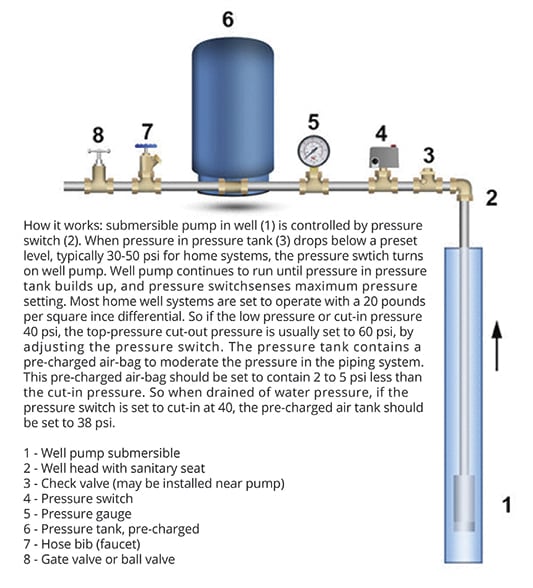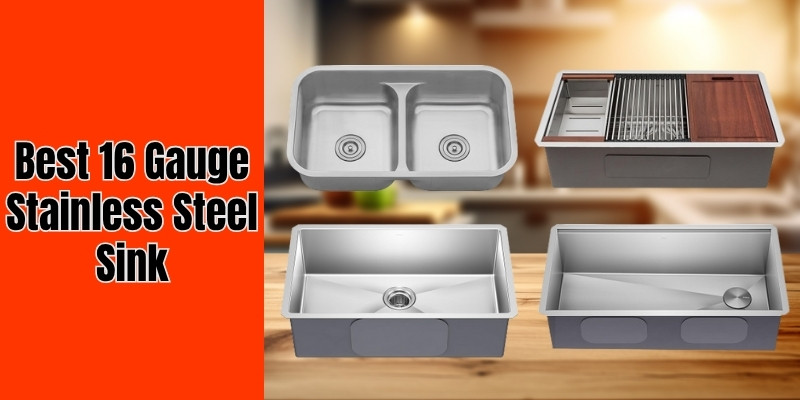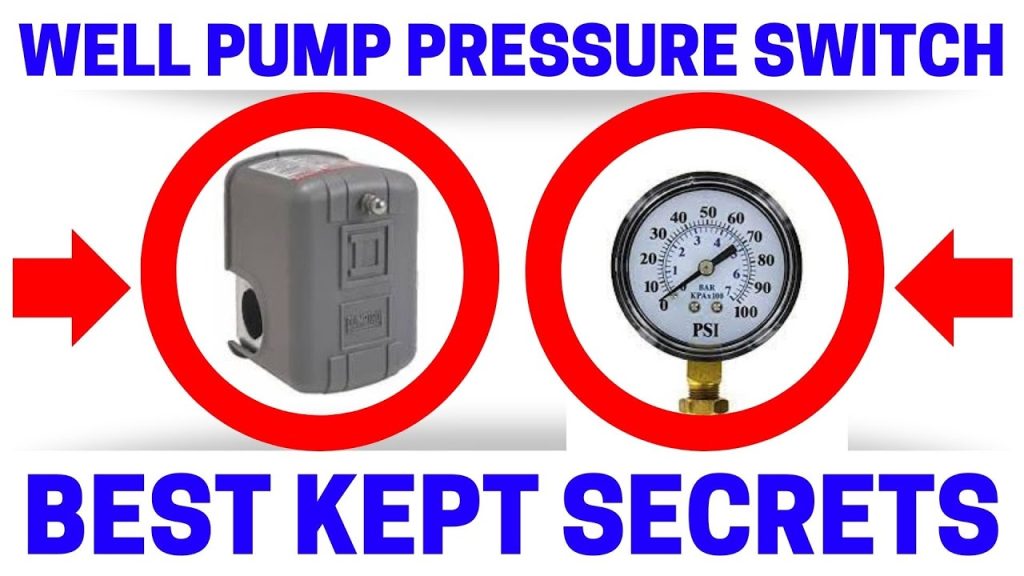Disclosure: This post contains affiliate links and I will be compensated if you make a purchase after clicking through my links. Learn More
Picture this: you’ve just replaced the pressure switch on your water system, expecting a smooth flow of water, yet your taps remain stubbornly dry. Frustrating, right?
You’re not alone. Many homeowners face this puzzling issue and wonder where they went wrong. But don’t worry, you’re about to uncover the answers you need. Imagine the relief of finally understanding what’s happening with your water system. We’ll guide you through the common reasons why your water might still be out of reach, even after replacing the pressure switch.
Whether it’s a hidden issue or a simple oversight, we’ll help you troubleshoot and solve the mystery. By the end, you’ll have the knowledge and confidence to get your water flowing again. Stay with us, and let’s dive into the solutions together!

Credit: www.amazon.com
Common Causes Of No Water Flow
Experiencing no water flow after replacing a pressure switch can be frustrating. Knowing common causes helps in addressing the issue efficiently. Several factors might contribute to the absence of water flow. Understanding these can guide you in troubleshooting effectively.
Electrical Issues
Electrical issues can disrupt water flow. Faulty wiring or tripped breakers might be the culprit. Inspect connections for any signs of damage. Ensure the power supply to the pump is stable. A multimeter can help check voltage levels.
Pump Problems
Pump problems are often behind water flow issues. The pump might be worn out or clogged. Listen for unusual noises from the pump. Check for leaks around the pump. Cleaning or replacing parts may solve the problem. Regular maintenance keeps the pump in good condition.
Pressure Tank Malfunctions
A malfunctioning pressure tank can affect water flow. The tank may have lost air pressure. Tapping the tank can reveal its condition. If it sounds hollow, it might need more air. Inspect the bladder for any damages. Ensuring proper pressure levels can restore water flow.

Credit: www.cleanwaterstore.com
Checking Electrical Connections
You’ve replaced the pressure switch, but there’s still no water. It’s time to check the electrical connections. Faulty wiring can disrupt the water flow. Ensuring proper electrical connections is crucial for a functional system. Start by inspecting circuit breakers. Then, test the pressure switch wiring.
Inspecting Circuit Breakers
First, locate your circuit breaker panel. Ensure all switches are in the correct position. A tripped breaker can halt water flow. Reset any tripped switches. Pay attention to the main switch for the pump. It should be in the “on” position. Confirm there are no loose connections in the panel.
Testing The Pressure Switch Wiring
Next, examine the pressure switch wiring. Check for visible damage. Look for frayed wires or burnt spots. These can prevent proper function. Ensure each wire is securely connected. Use a multimeter to test voltage. Verify the switch is receiving power. Incorrect voltage can affect performance.
Evaluating The Water Pump
Experiencing no water flow even after replacing the pressure switch? It might be time to evaluate the water pump. Check for blockages, broken parts, or electrical issues to restore proper function.
Evaluating the water pump is crucial when you’ve replaced the pressure switch but still experience no water flow. Often, the issue lies deeper within the mechanics of the water pump itself. Understanding how your pump works and identifying signs of its failure can save you time and frustration.
It’s like when I first faced this problem, I realized knowing what to look for helped me solve it faster than I expected.
Pump Motor Functionality
The pump motor is the heart of your water pump system. It needs to be in good working order to ensure a steady flow of water. Start by checking if the motor is getting power. A simple multimeter test can reveal if electricity is reaching the motor.
If the pump doesn’t turn on, there might be an electrical issue. Listen for unusual noises. A grinding or whining noise could indicate motor wear or internal damage. This was a red flag for me, prompting a closer inspection which revealed a loose component.
Signs Of Pump Failure
Identifying signs of pump failure early can prevent bigger problems. A clear sign is inconsistent water pressure. If you notice the water flow fluctuating, it could mean the pump is struggling to maintain pressure. Check for leaks around the pump.
Even small drips can signify a failing seal or a crack in the pump housing. When I noticed a small puddle near my pump, it turned out to be a minor seal issue, but catching it early saved me from more significant repairs. Does your pump run continuously without shutting off? This could mean it’s unable to reach the desired pressure and might be on its last legs.
Evaluating these factors will help you get to the root of your water issues. If you discover problems, consider whether a repair or replacement is necessary. What have you observed about your pump that needs attention?

Credit: www.youtube.com
Assessing The Pressure Tank
Replacing the pressure switch might not resolve water issues. Examining the pressure tank is crucial. Faulty tanks can hinder water flow, causing interruptions. Check for leaks or defects that might affect water delivery. Ensure the tank is properly charged and functioning to maintain consistent water supply.
A replaced pressure switch should ideally resolve water issues, but what if it doesn’t? The pressure tank might be the next culprit. Assessing the pressure tank is crucial in diagnosing the problem. Understanding its role and ensuring it functions correctly will put you on the path to solving water woes. Let’s dive into the essentials of evaluating your pressure tank.
Checking Tank Pressure Levels
Start by turning off the power to your pump and draining the tank. Use a tire pressure gauge to check the tank’s air pressure at the air valve, often found on the top or side of the tank. The pressure level should be 2 psi below the pump cut-on pressure.
If your pump activates at 30 psi, the tank should be at 28 psi. Adjust the pressure with an air compressor or release air as needed. Is your pressure gauge reading way off? It might be time for a new one.
Identifying Tank Leaks
Leaks in a pressure tank can disrupt your water supply. Look closely for any water pooling around the base of the tank. Run your hand along the tank’s sides to feel for damp spots. Hearing a continuous hissing sound near the tank? You might have a hidden leak. Don’t forget to inspect the tank’s air valve. A leaking valve can mimic a tank leak and lead to pressure loss.
Assessing these aspects of your pressure tank can reveal underlying problems. Have you ever considered how much a small leak could cost you in wasted water? Keeping an eye on these details can save you from future headaches. Remember, every step you take toward understanding your pressure system brings you closer to a solution.
Troubleshooting Additional Components
You’ve replaced the pressure switch on your well system, yet your taps are still dry. It’s a frustrating situation, leaving you to wonder what to tackle next. Troubleshooting additional components might be the key to solving this puzzle and getting your water flowing again.
Examining Check Valves
Check valves are crucial in maintaining the flow of water in one direction. If a check valve fails, it can cause water to drain back into the well, disrupting the pressure. To ensure it’s not the culprit, inspect the valve for any signs of wear or damage.
Listen for any unusual sounds when the water pump is running. A chattering noise might indicate a faulty valve. Tighten connections and replace the valve if necessary to restore water flow.
Have you ever thought about how one small part could halt your entire water supply? It’s amazing how such minor components play a significant role in your daily life.
Inspecting The Well
Your well might be hiding secrets that affect your water supply. Inspect the well for any obstructions or debris that could be blocking the flow of water. A simple visual inspection can sometimes reveal a lot.
Check the well pump’s power supply. Ensure the electrical connections are secure and functioning. Sometimes, a tripped circuit breaker or a blown fuse could be the reason behind the water shortage.
Have you checked the water level in your well? Low water levels might indicate a need for further investigation. Regular monitoring can prevent unexpected water issues.
Troubleshooting doesn’t have to be overwhelming. By focusing on these components, you can take practical steps toward resolving your water woes. Are you ready to dive into these checks and restore your water system’s functionality?
Steps For Immediate Fixes
Finding yourself with no water even after replacing the pressure switch can be frustrating. But before you panic, there are some immediate steps you can take to address the issue. These quick checks could save you time and money, ensuring that your water system is back up and running smoothly. Ready to dive into some practical fixes?
Resetting The System
Sometimes, your water system simply needs a reset. Think of it like rebooting your computer when it freezes. Begin by turning off the power to the pump system. Wait a few minutes. This allows the system to fully shut down, clearing any glitches.
Next, turn the power back on. Listen for any unusual sounds or vibrations. A normal hum indicates the system is starting up correctly. If the system still doesn’t work, you might need to check the control box for a reset button or switch.
Have you tried resetting your system before? Share your experience in the comments. It might help someone else dealing with the same issue!
Rechecking The Installation
After replacing the pressure switch, double-check your installation. A loose connection or misplaced wire can easily disrupt the system. Carefully inspect the pressure switch and ensure all wires are correctly attached.
Make sure the switch is properly aligned with the pump. An incorrect installation can prevent the system from operating efficiently. Are the wires tight and secure? Loose connections can lead to bigger problems down the line.
Did you follow the installation manual closely? It’s surprising how often a small oversight can cause major issues. Share your installation tips or questions below!
By focusing on these immediate steps, you can often resolve the no-water issue quickly. Have you encountered any other quick fixes that worked for you? Engage with us and help build a community of DIY water system troubleshooters!
When To Call A Professional
Experiencing no water after replacing the pressure switch can be frustrating. It’s essential to call a professional if the issue persists, as the problem might be complex. A trained expert can diagnose and fix issues accurately, ensuring your water system functions properly.
If you’ve replaced the pressure switch and still face water issues, it’s puzzling. Not every problem is easy to fix on your own. Sometimes, it’s best to call a professional. Experts know what to do in tricky situations. They ensure everything runs smoothly and safely.
Complex Electrical Repairs
Electrical issues can be risky and complicated. A trained professional handles these safely. They have the right tools and knowledge. Never try to fix complex electrical problems alone. It can lead to accidents or more damage. Professionals ensure your system works without risks.
Severe Pump Or Tank Damage
Severe damage to the pump or tank is serious. It needs expert attention. Professionals assess the damage correctly. They decide the best solution quickly. Fixing these yourself can worsen the issue. Trust an expert to restore your system effectively. `
Frequently Asked Questions
Why Is There Still No Water After Switch Replacement?
Your pump might have electrical issues. Check connections. Inspect pump for damage. Ensure water source is adequate.
Could A Faulty Pump Cause No Water Flow?
Yes. A malfunctioning pump can prevent water flow. Test pump operation. Listen for unusual sounds. Consider professional assessment.
What Should I Check After Replacing A Switch?
Verify electrical connections. Inspect pressure settings. Ensure water source availability. Check for pump damage or blockages.
Is Low Pressure A Reason For No Water?
Absolutely. Low pressure can stop water flow. Inspect pressure tank. Adjust settings. Check for leaks or blockages.
Final Words
Experiencing no water after a pressure switch change? Frustrating, right? Check for other issues like clogged pipes or faulty pump. Sometimes, the problem lies deeper. A professional can help identify hidden problems. Regular maintenance prevents future issues. Keep an eye on water pressure fluctuations.
They signal potential problems early. Don’t let small issues grow into big troubles. Stay proactive with your plumbing system. It saves time and stress. For more tips, consult experts or reliable resources. Remember, a little care goes a long way.
Enjoy consistent water flow with mindful upkeep.


